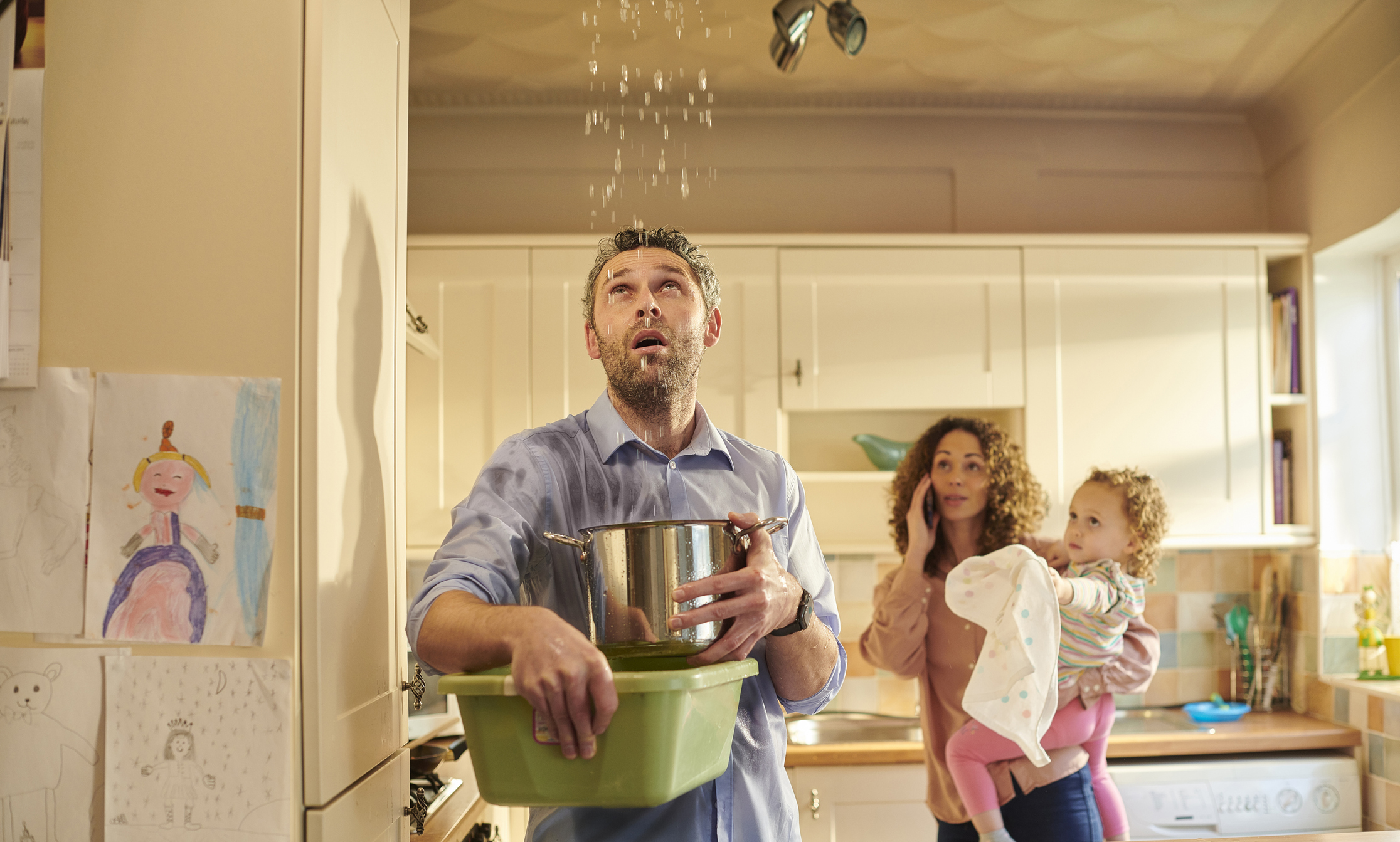How to Prevent Pipes From Freezing This Winter
Take these steps to prevent pipes from freezing in your home — before old man winter comes knocking on your door.


It's every homeowner's nightmare; you fail to prevent pipes from freezing in your home and a pipe bursts, flooding your house. Unfortunately, cold weather — particularly subzero temperatures — can take a toll on your home. Happily, there are many affordable ways to prepare your home for winter and prevent frozen pipes.
Prevent pipes from freezing to save money
Cleaning up water damage from a burst pipe can cost tens of thousands of dollars, according to CostHelper data. Sadly, it’s an all-too-frequent occurrence: Every year, roughly one in 60 insured homes has a property damage claim caused by water damage or freezing, according to the Insurance Information Institute.
The good news is that a standard home insurance policy often covers damage from a burst pipe. But why deal with the headache of cleaning and the hassle of filing an insurance claim when a few precautionary measures can help prevent your home’s pipes from freezing in the first place?

Sign up for Kiplinger’s Free E-Newsletters
Profit and prosper with the best of expert advice on investing, taxes, retirement, personal finance and more - straight to your e-mail.
Profit and prosper with the best of expert advice - straight to your e-mail.
How to Prevent Pipes from Freezing
When water freezes it expands, building pressure on the inside of the pipe. Eventually, that pressure reaches a breaking point and causes the pipe to rupture.
Here’s how to help prevent that from occurring.
Drain outdoor faucets. Disconnect hoses and allow all the water to drain out of the outdoor faucets. Then, turn off your home’s outdoor water supply valve, which is typically located in the basement or garage.
Keep garage doors closed. This is especially important if there are water supply lines in your garage.
Prop open kitchen and bathroom cabinet doors. This will allow warmer air to circulate around uninsulated pipes under sinks.
Keep the thermostat set to the same temperature during the day and night. If you're wondering whether you should leave your heat on all day or turn it off to save money, consider your local climate and the weather forecast. In general, leaving your heat on even when you are away from home or asleep is cheaper than turning it off completely. To avoid a burst pipe, you might even want to nudge the temperature up to your daytime setting during the night, given that sudden drops in temperature can lead to frozen pipes.
Set the thermostat no lower than 55° F when you go away. For good measure, also shut off your house’s main water valve before you leave.
Add insulation to attics, basements, and crawl spaces. Insulation isn’t cheap — it typically costs $0.30 to $6.75 per square foot, depending on the material. But remember that there are substantial tax credits available for energy-efficient home improvements, including up to $1,600 for insulation, air sealing, and ventilation. Insulating your home can be a worthwhile investment since it will help maintain higher temperatures in these vulnerable areas.
Insulate pipes. Wrapping pipes with heat tape is relatively inexpensive but can go a long way toward protecting them from the cold weather. Make sure to use heat tape that’s approved by UL Solutions, a global product safety and certification organization.
Seal air leaks. Inspect your home for cracks and openings, and seal them with caulk to prevent cold air from infiltrating your home.
How to thaw a frozen pipe
If you turn on a faucet and only a trickle of water comes out, a frozen pipe could be the culprit. Other warning signs to watch out for: whistling or banging coming from pipes; bubbling sounds when you flush a toilet; dampness on drywall or ceilings; or a foul odor from a drain or faucet.
Here’s how to thaw a frozen pipe before it bursts.
Turn on the faucet. Running water through the pipe will help melt the ice.
Apply heat gently. Use an electric hair dryer, an electric heating pad, towels soaked in hot water, or a portable space heater. Never use a blowtorch or other open flame device.
Don’t stop applying heat until the full water pressure is restored. Once restored, leave the faucet running for a few minutes to give the ice time to completely clear from the line.
What to do if a pipe bursts
You’ll need to act quickly to mitigate the damage.
Shut off the water supply. The fastest way to do this is to turn off your home’s main water valve.
Check all other faucets in your home. If one pipe freezes, others may freeze, too.
Call a licensed plumber. You can use an online directory such as Angi, Thumbtack, or the Better Business Bureau to find one in your area.
Notify your insurance provider. File a claim right away to expedite the process.
Read More
Get Kiplinger Today newsletter — free
Profit and prosper with the best of Kiplinger's advice on investing, taxes, retirement, personal finance and much more. Delivered daily. Enter your email in the box and click Sign Me Up.

Daniel Bortz is a freelance writer based in Arlington, Va. His work has been published by The New York Times, The Washington Post, Consumer Reports, Newsweek, and Money magazine, among others.
-
 The AI Doctor Coming to Read Your Test Results
The AI Doctor Coming to Read Your Test ResultsThe Kiplinger Letter There’s big opportunity for AI tools that analyze CAT scans, MRIs and other medical images. But there are also big challenges that human clinicians and tech companies will have to overcome.
By John Miley Published
-
 The Best Places for LGBTQ People to Retire Abroad
The Best Places for LGBTQ People to Retire AbroadLGBTQ people can safely retire abroad, but they must know a country’s laws and level of support — going beyond the usual retirement considerations.
By Drew Limsky Published